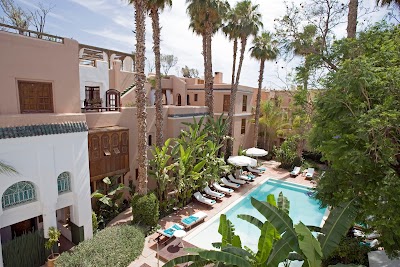Mogador Island (جزيرة موكادور)
Overview
Mogador Island, nestled just off the coast of Essaouira in Morocco, is a captivating destination steeped in history, intrigue, and natural beauty. This seemingly small island has played a significant role throughout the centuries, evolving into a vibrant melting pot of diverse cultures and historical narratives.
Historical Significance
The island's strategic location has long made it a point of interest for various civilizations. The Phoenicians were among the first to recognize its value, utilizing it as a trading post as far back as the 5th century BC. Today, visitors can still find remnants of their presence in the form of ancient pottery and artifacts that offer fascinating insights into life during that era.
Fast forward to the 16th century, and the island gained new importance with the arrival of the Portuguese. As they expanded their maritime empire, they recognized Mogador Island as a crucial location for controlling Atlantic trade routes. To solidify their hold, the Portuguese constructed a fortress, parts of which still stand today, showcasing their impressive engineering skills despite the ravages of time.
Architectural Evolution
In the 18th century, Sultan Mohammed III of Morocco saw the island's potential and undertook efforts to further develop it, aiming to protect Essaouira from foreign naval threats. He enlisted French architect Théodore Cornut to design robust fortifications, including the remarkable ramparts that face the Atlantic Ocean. These sturdy structures, built from locally sourced stone, are a testament to the island's resilience against harsh sea winds.
During the early 20th century, Mogador Island assumed yet another role during the French colonial period, serving as a quarantine station for incoming travelers to Morocco. Numerous buildings were constructed for this purpose, some of which remain abandoned today, creating an eerie yet fascinating atmosphere that intrigues visitors.
Natural Wonders
Beyond its historical structures, Mogador Island is also a sanctuary for wildlife. The surrounding waters teem with marine life, offering excellent opportunities for fishing and diving enthusiasts. The island is particularly notable for its diverse bird species, including the endangered Eleonora's Falcon, which nests along its cliffs during breeding season.
Recently, concerted efforts have been made to preserve both the historical and ecological significance of Mogador Island. Archaeologists continue to study remnants of ancient civilizations, while conservationists work diligently to maintain the island's delicate ecosystem. These combined efforts ensure that Mogador Island remains a place where history and nature coexist, allowing future generations to appreciate its rich legacy.
In summary, Mogador Island in Essaouira, Morocco, is a microcosm of the region's rich history. From ancient Phoenician traders and Portuguese fort-builders to Moroccan sultans and French colonial administrators, each civilization has left an indelible mark on this fascinating island. Its stunning natural beauty, paired with profound historical significance, makes Mogador Island a must-visit destination for anyone interested in exploring the intricate tapestry of human endeavor and natural wonder.









